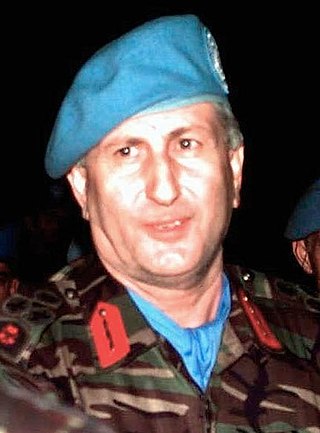
Çevik Bir is a retired Turkish army general. He was a member of the Turkish General Staff in the 1990s. He took a major part in several important international missions in the Middle East and North Africa. He was born in Buca, Izmir Province, in 1939 and is married with one child.

The Ethiopian National Defense Force (ENDF) is the military force of Ethiopia. Civilian control of the military is carried out through the Ministry of Defense, which oversees the Ground Forces, Air Force, Naval Force as well as the Defense Industry Sector.

The Somali Armed Forces are the military forces of the Federal Republic of Somalia. Headed by the president as commander-in-chief, they are constitutionally mandated to ensure the nation's sovereignty, independence and territorial integrity.
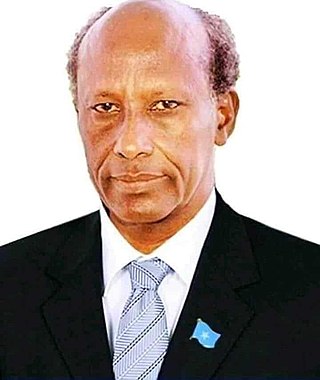
Mohamed Farrah Hassan Garad, known as General Aidid or Aideed, was a Somali general and diplomat.
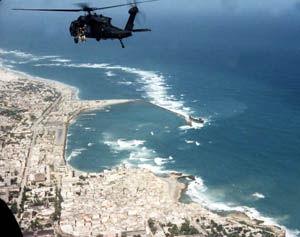
The Battle of Mogadishu, also known as the Black Hawk Down Incident, was part of Operation Gothic Serpent. It was fought on 3–4 October 1993, in Mogadishu, Somalia, between forces of the United States—supported by UNOSOM II—against the forces of the Somali National Alliance (SNA) and armed irregular citizens of south Mogadishu.

Creighton Williams Abrams Jr. was a United States Army general who commanded military operations in the Vietnam War from 1968 to 1972. He was then Chief of Staff of the United States Army from 1972 until his death in 1974.
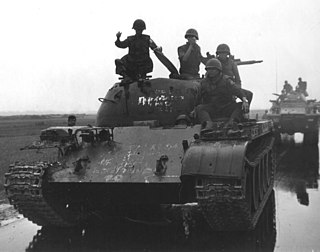
The Easter Offensive, also known as the 1972 spring–summer offensive by North Vietnam, or the Red Fiery Summer as romanticized in South Vietnamese literature, was a military campaign conducted by the People's Army of Vietnam against the Army of the Republic of Vietnam and the United States military between 30 March and 22 October 1972, during the Vietnam War.

Operation Gothic Serpent was a military operation conducted in Mogadishu, Somalia, by an American force code-named Task Force Ranger during the Somali Civil War in 1993. The primary objective of the operation was to capture Mohamed Farrah Aidid, leader of the Somali National Alliance who was wanted by the UNOSOM II in response to his attacks against United Nations troops. The operation took place from August to October 1993 and was led by US Joint Special Operations Command (JSOC).

The United Nations Operation in Somalia II was the second phase of the United Nations intervention in Somalia and took place from March 1993 until March 1995, following the outbreak of the Somali Civil War in 1991. UNOSOM II carried on from the transitory United States-controlled (UN-sanctioned) Unified Task Force (UNITAF), which had been preceded by UNOSOM I. Notably, UNOSOM II embarked on a nation-building mission, diverging from its predecessors. As delineated in UNSCR 814, the operation's objectives were to aid in relief provision and economic rehabilitation, foster political reconciliation, and re-establish political and civil administrations across Somalia.

Operation United Shield was the codename of a military operation, conducted 9 January to 3 March 1995, bringing a conclusion to the United Nations Operation in Somalia II. Commanded by the United States, two ships of the Pakistan Navy, five ships of the Italian Navy and six ships of the United States Navy formed a Combined Task Force (CTF) ensuring the safe evacuation of all UN Peacekeeping Forces from Somalia.
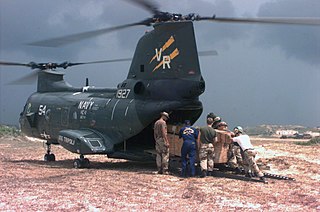
The Unified Task Force (UNITAF) was a United States-led, United Nations-sanctioned multinational force which operated in Somalia from 5 December 1992 until 4 May 1993. A United States initiative, UNITAF was charged with carrying out United Nations Security Council Resolution 794 to create a protected environment for conducting humanitarian operations in the southern half of the country.

Leslie Aspin Jr. was an American Democratic Party politician who served as the U.S. representative for Wisconsin's 1st congressional district from 1971 to 1993 and as the 18th United States Secretary of Defense under President Bill Clinton from 1993 to 1994.

The 1975 spring offensive, officially known as the general offensive and uprising of spring 1975, was the final North Vietnamese campaign in the Vietnam War that led to the capitulation of Republic of Vietnam. After the initial success capturing Phước Long Province, the North Vietnamese leadership increased the scope of the People's Army of Vietnam's (PAVN) offensive and captured and held the key Central Highlands city of Buôn Ma Thuột between 10 and 18 March. These operations were intended to be preparatory to launching a general offensive in 1976.
The Somali National Alliance was a major politico-military faction formed on 16 June 1992 by four different rebel groups that had been in opposition to the regime of former Somali President Mohamed Siad Barre. The SNA was the first major inter-clan and inter-factional political alliance and was considered to be among the most powerful factions of the Somali Civil War. The alliance would most notably face off against the second phase of the United Nations Operation in Somalia in the latter half of 1993.

Bruce Bennett Gorham Clarke is a former United States Army officer. Clarke is currently president of Bruce Clarke Consultants, Inc., a defense consulting firm. He is widely published on military and national security affairs, including in his book Expendable Warriors (2007) and in a regular column for the Examiner.
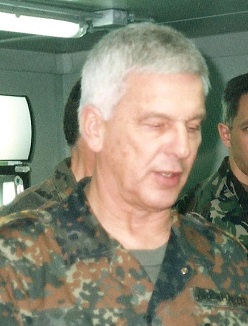
Klaus Reinhardt was a German Army general. He was the commander of the German Army Forces Command, the NATO Joint Headquarters Center, and KFOR in Kosovo. Reinhardt died on 30 November 2021, at the age of 80. He was the son of Nazi bureaucrat Fritz Reinhardt.

The Bloody Monday raid, also known as the Abdi House raid or Operation Michigan, was a US military operation that took place in Mogadishu on 12 July 1993, during the United Nations Operation in Somalia II phase of the UN intervention in the Somali Civil War. Carried out by American QRF troops on behalf of UNOSOM II, the raid was the war's deadliest incident in Mogadishu to that point and a turning point in the UN operation. It inflamed anti-UN and anti-American sentiments among Somalis, galvanizing the insurgency that the US military faced during the Battle of Mogadishu three months later.
The June 5th 1993 attack on the Pakistani military was a major confrontation that occurred concurrently in different parts of the Somali capital of Mogadishu, between Somali citizens & militias against the Pakistani peacekeeping contingent of UNOSOM II.
On 13 June 1993, an element of the Pakistani contingent of UNOSOM II opened fire with a machine gun onto a crowd of protestors in Mogadishu, Somalia, shooting approximately 70 Somalis. At least 20 people were killed in the attack, including women and children, and more than 50 others were wounded. The shooting took place in the aftermath of the 5 June 1993 attack on the Pakistanis a week prior.
















